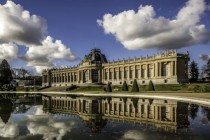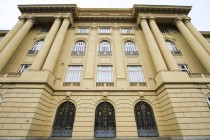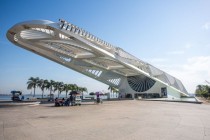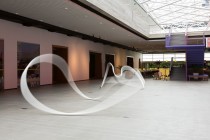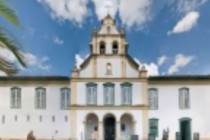| Bangladesh |
Dhaka |
Bangladesh National Museum |
340. |
301 |
|
|
History, art, archeology,... natural history, ethnology
|
More |
The historical origins of the Bangladesh National Museum is the Dacca Museum established in 1913. The Bangladesh National Museum was formally inaugurated in 1983.
The exhibitions are arranged chronologically from prehistory to the present day. The collection of gold, silver and copper coins from various periods of Bangladesh and Indian history is notable. The museum has one of the largest collections of armor and weapons in the Indian subcontinent. He is in possession of a large collection of paintings by Shilpacharya Zainul Abedin (1914-1976). One of the permanent exhibitions presents all phases of the Bengalis' struggle for political freedom, economic emancipation and cultural identity in the years 1757-1971.
The Bangladesh National Museum occupies a building with a total area of nearly 18,800 square meters.
|
| Belgium |
Antwerp |
Middelheim Museum |
347. |
195 |
|
|
Modern and contemporary... art
|
More |
The Middelheim Museum (Middelheimmuseum) was opened in 1951 as the open-air sculpture museum. Then, for the needs of the museum, buildings were built successively: the Braem Pavilion, depot in Middelheim-Hoog, and the Het Huis pavilion (The house). The Middelheim museum has a branch called Art in the City active in all districts of Antwerp.
The collection consists of about 400 works of art. including works by artists such as Auguste Rodin, Constantin Meunier, Émile-Antoine Bourdelle, Aristide Maillol, Arturo Martini, Hans Arp, Ossip Zadkine, Barbara Hepworth, Henry Moore, Alexander Calder.
The Middelheim Museum covers an area of 27 hectares.
|
| Belgium |
Brussels |
Royal Museums of Fine Arts of Belgium |
212. |
300 |
|
|
Art
|
More |
Royal Museums of Fine Arts of Belgium founded in 1803.
It consists of the Oldmasters Museum, Modern Museum, Magritte Museum, Fin-de-Siècle Museum, Meunier Museum, Wiertz Museum. It has 20,000 paintings, sculptures and drawings that date from the beginning of the 15th century to the present day. The collected works of art are by, among others: Pieter Bruegel, Peter Paul Rubens, Jacques Jordaens, Paul Gauguin, Vincent van Gogh, Salvador Dalí, Paul Delvaux, René Magritte, Henry Moore.
|
| Belgium |
Brussels |
Bozar |
286. |
174 |
|
|
Art
|
More |
The Center for Fine Arts, opened in 1928, has been using the name BOZAR since 2002.
It includes exhibition and conference rooms, a cinema and a concert hall. In total, it covers an area of 33,000 square meters.
BOZAR organizes up to 10 exhibitions per year.
|
| Belgium |
Jette |
„Brussels Museums” |
413. |
32 |
|
|
Communal
|
More |
The contr. director is Bérengère de L.
|
| Belgium |
Tervuren |
Royal Museum for Central Africa |
403. |
162 |
|
|
Ethnography, natural... history, history, art
|
More |
The Royal Museum for Central Africa (AfricaMuseum) was established in 1898. The museum was officially opened to the public on April 30, 1910.
The Royal Museum for Central Africa houses one of the world's most extensive collections related to Central Africa, particularly focusing on the Democratic Republic of the Congo (formerly Belgian Congo).
Main Collections of the Royal Museum for Central Africa
1. Ethnographic & Cultural Artifacts
- Traditional masks, sculptures, and musical instruments from Central African ethnic groups such as the Luba, Kuba, and Songye.
- Everyday objects, textiles, and weapons from various African cultures.
- Royal regalia and court artifacts from African kingdoms like the Kuba Kingdom.
- Ritual objects, including fetishes and power figures (nkisi nkondi) used in spiritual practices.
2. Natural History & Zoological Collections
- Extensive botanical and zoological specimens, including stuffed animals, skeletons, and insect collections.
- Fossils and minerals from Central Africa, showcasing geological diversity.
- Specimens from major African ecosystems, including the Congo rainforest and savanna.
3. Historical Archives & Colonial Artifacts
- Documents, photographs, and films from the colonial period (1885–1960).
- Artifacts related to the Force Publique, the Belgian colonial army.
- Maps, reports, and missionary records detailing early European exploration in Africa.
- Personal belongings of historical figures such as Henry Morton Stanley and King Leopold II.
4. Artistic Collections
- Contemporary African art, including paintings and sculptures from modern Congolese artists.
- Colonial-era paintings and propaganda materials depicting Belgium’s role in Central Africa.
- Photography collections showcasing African daily life and traditions.
5. Linguistics & Musicology
- One of the largest collections of Central African languages and dialect recordings.
- Traditional African musical instruments, such as drums, xylophones, and thumb pianos (mbira).
- Field recordings and ethnographic studies of African oral traditions and storytelling.
The Royal Museum for Central Africa holds a massive collection of approximately 10 million objects, only about 8,000 to 10,000 objects are on display at any given time in exhibitions.
The Royal Museum for Central Africa, has a total area of approximately 25,600 square meters. Around 11,000 square meters is dedicated to public exhibitions.
Copyright: MRAC
|
| Bolivia |
Tiwanaku |
Tiwanaku |
387. |
206 |
|
|
Archaeological site
|
More |
The ruins of Tiwanaku (Tiahuanaco), a pre-Columbian city, cover an area of approximately 400 hectares.
Tiwanaku is located at an altitude of approximately 3,850 meters above sea level.
The city was founded around 110 AD and collapsed around 1000 AD. The city was first recorded in written history in 1549 by the Spanish conquistador.
The main structures are the Akapana, Kalasasaya, Pumapunku and the Semi-Subterranean Temple terraced step platforms. Other monuments include the Gate of the Sun, Gate of the Moon, Fraile Monolith, Bennett Monolith.
Tiwanaku is home to the Museo Cerámico and Museo Lítico administered by the Centro de Investigaciones Arqueológicas, Antropológicas y Administración de Tiwanaku (CIAAAT) and the Museo Regional de Arqueología de Tiwanaku administered by the Dirección Nacional de Arqueología y Antropología (DINAAR).
|
| Brazil |
Belo Horizonte |
Centro Cultural Banco do Brasil |
238. |
192 |
|
|
Art
|
More |
Centro Cultural Banco do Brasil Belo Horizonte (CCBB BH) was opened in 2013.
It has, among others, 6 exhibition rooms, an educational program room, a multimedia room, and a cultural goods warehouse.
It has an area of 12,000 square meters.
Foto Vagner Costa
|
| Brazil |
Brasília |
Centro Cultural Banco do Brasil |
135. |
327 |
|
|
Art
|
More |
Centro Cultural Banco do Brasil, Brasília opened in 2000. It covers an area of 7,000 square meters.
Museu Banco do Brasil has in its collection works of artists from the first half of the 20th century, such as Bruno Giorgi, Candido Portinari, Emiliano Di Cavalcanti.
|
| Brazil |
Brasilia |
Museu Nacional da República |
201. |
209 |
|
|
Art
|
More |
Museu Nacional da República also called Honestino Guimarães Museu Nacional inaugurated in 2006.
Together with the National Library of Brasília, it is part of The Complexo Cultural da República.
Museu Nacional da República it is a space that inserts Brasília into the international arts circuit and shows the best in Brazilian art. The space is used for itinerant exhibitions by renowned artists and themes important to society, lectures, film shows, seminars and important events.
The most important temporary exhibitions to date include:
- Niemeyer & Niemeyer e Brasília - Patrimônio da Humanidade (2006),
- Imagens impressas: Um percurso histórico pelas gravuras da Coleção Itaú Cultural (2018).
The museum consists of an exhibition section divided into three floors connected by ramps and a mezzanine with an area of 14,500 square meters, two auditoriums with 780 seats and a laboratory.
|
| Brazil |
Petrópolis |
Imperial Museum |
331. |
253 |
|
|
Historic house
|
More |
The Imperial Museum (Museu Imperial) is located in the Imperial Palace, the former summer residence of Emperor Dom Pedro II of Brazil. The palace was built between 1845 and 1862 in the neoclassical style with elements of Renaissance architecture. After the overthrow of the monarchy in 1889, the palace became state property. In 1940, the palace was transformed into a museum. The official opening of the Imperial Museum took place in 1943.
The palace measures approximately 60 meters by 40 meters. The palace and its surrounding extensive gardens designed in a style inspired by European palatial residences cover an area of approximately 18.4 hectares.
The main rooms of the palace are:
- State rooms, such as the imperial salon and dining room,
- The imperial office where Dom Pedro II worked,
- Private rooms, including the bedrooms of the imperial family,
- Library and archives where historical documents are kept,
- The Coronation Hall, where the imperial insignia are displayed.
The Imperial Museum's most important collections include:
1. Imperial Insignia and Regalia
- One of the most famous and valuable exhibits is the imperial crown of Dom Pedro II, decorated with precious stones and made of the highest quality gold.
- The museum also has other insignia of power, such as the imperial scepter and coronation robes, which symbolize imperial power in Brazil.
2. Collection of Imperial Furniture and Interiors
- The museum contains original period furniture and furnishings, including elegant sofas, chairs, tables, beds and chests of drawers that were used by the imperial family.
3. Paintings and Portraits of the Imperial Family
- The collection of paintings includes numerous portraits of Dom Pedro II, his wife, Empress Teresa Christina, and their children, including Princess Isabella.
- There are also paintings by Brazilian painters depicting court life and landscapes from the era.
4. Outfits and Jewelry
- The museum houses numerous costumes belonging to members of the imperial family, including ceremonial and everyday clothing, which reflect the fashion of the Brazilian aristocracy of the 19th century.
- The collection also includes jewelry items such as brooches, necklaces and rings decorated with precious stones.
5. Historical Documents and Letters
- One of the most important sections of the museum is the archive, which preserves manuscripts, letters, government documents and other writings related to Dom Pedro II, including his diaries and correspondence.
6. Book and Scientific Collections of Dom Pedro II
- Dom Pedro II was passionate about science, and his book collection includes works from various fields such as astronomy, geology and literature.
- There are also scientific instruments that the emperor used for scientific research and observations.
7. Souvenirs and Everyday Use Items
- The museum's collection includes personal memorabilia of the imperial family, such as toiletries, watches, tableware, and everyday items that allow you to better understand their lifestyle.
8. Exhibits related to the Abolition of Slavery
- The museum also contains items related to the Golden Law Decree of 1888, which was signed by Princess Isabella and ended slavery in Brazil. It is a key moment in the country's history and an important aspect of the museum's heritage.
The Imperial Museum has approximately 300,000 exhibits.
|
| Brazil |
Rio de Janeiro |
Centro Cultural Banco do Brasil |
61. |
451 |
|
|
Art
|
More |
Centro Cultural Banco do Brasil, Rio de Janeiro opened in 1989. It covers an area of 15 046 square meters.
Museu Banco do Brasil, created in 1955, has a historical collection, which includes, among others, numismatic items and documents. In the museum you can see original interiors with period furniture, for example, the presidential room. An interesting feature of the museum is the pneumatic installation, which, using compressed air, uses a system of underground pipes to quickly transport documents inserted into small metal containers.
|
| Brazil |
Rio de Janeiro |
Museum of Tomorrow |
335. |
205 |
|
|
Science
|
More |
Museum of Tomorrow (Museu do Amanhã) was opened in 2015.
The main exhibition is divided into Cosmos, Earth, Anthropocene, Tomorrow, and Us.
The museum covers an area of 15,000 square meters, with the surrounding pools, gardens, bicycle path, and leisure area 34,600 square meters.
Photo credits: Albert Andrade
|
| Brazil |
São Paulo |
Centro Cultural Banco do Brasil |
157. |
202 |
|
|
Art
|
More |
Centro Cultural Banco do Brasil, São Paulo opened in 2001. It covers an area of 4 183 square meters.
Centro Cultural Banco do Brasil, São Paulo does not have its own collection. The CCBB program, São Paulo is prepared annually and begins with the process of registering projects via the Internet. Anyone can submit their project, Project registration is done by filling out a comprehensive electronic form. The registration period is usually from April to May. After the registration phase, the projects are examined by CCBB analysts who receive guidance from management on the marketing strategies for the current year.
|
| Brazil |
São Paulo |
Instituto Tomie Ohtake |
222. |
335 |
|
|
Art
|
More |
Instituto Tomie Ohtake was opened in 2001.
Instituto Tomie Ohtake organizes national and international exhibitions of fine arts, architecture and design. His interests include the art of the 20th and 21st centuries.
It does not have its own collection.
Its area is 7,500 square meters, most of this area is occupied by 7 exhibition rooms.
Credits by Ricardo Miyada
|
| Brazil |
São Paulo - SP |
Museu de Arte Sacra de São Paulo |
365. |
138 |
|
|
Art, sacred art
|
More |
Museu de Arte Sacra de São Paulo (MAS-SP) is a public institution affiliated with the Government of the State of São Paulo, under the responsibility of the Secretariat of Culture, Economy, and Creative Industries. It was inaugurated in 1970.
Located in the city of São Paulo, the Museum occupies the Mosteiro da Luz, a convent belonging to the Order of the Conceptionist Sisters (Order of the Immaculate Conception - OIC), whose nuns live in seclusion.
The Mosteiro da Luz was founded in 1774 by Frei Galvão (Frei Antônio de Sant’Anna Galvão, 1739–1822), the first Brazilian saint, whose remains are interred beneath the Monastery.
Today, the Monastery stands as the only colonial building from the 18th century in São Paulo that has preserved its original materials, elements, and structure. It is an example of taipa (rammed earth) architecture.
The MAS-SP houses one of the most important collections of sacred art in Brazil, assembled by the Archdiocesan Mitre throughout the 20th century. The collection includes pieces from historic churches across the country, sculptures of saints produced in Brazil and Europe between the 16th and 20th centuries, as well as silverware and paintings.
Its holdings comprise religious sculptures from the colonial period and several masterpieces by prominent artists such as Aleijadinho, Frei Agostinho da Piedade, Frei Agostinho de Jesus, Mestre Valentim, Mestre Ataíde, Almeida Júnior, and Benedito Calixto.
|




